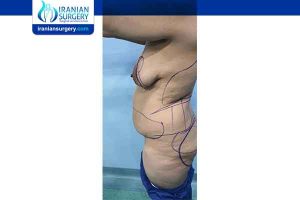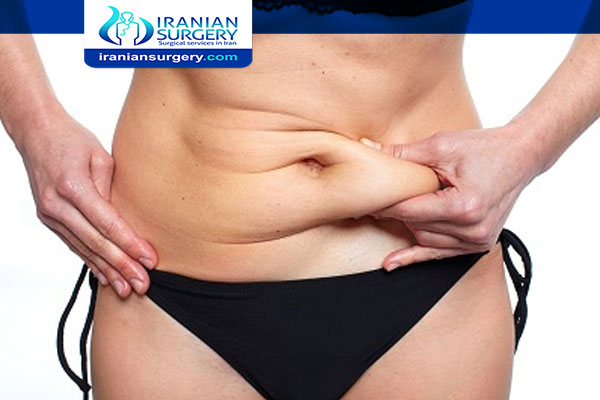What is the weight requirement for liposuction?
Can you get lipo with a high BMI?
What is the ideal BMI for liposuction?
My bmi is 35 can i get a liposuction?
The body mass index (BMI) is a measurement of an individual's weight according to his or her height. It is widely used as an indicator of the amount of a person's body fat. There are better ways to measure body fat specifically, but determining a person's BMI is fast and serves as an easy screening method.

What BMI do you need for liposuction?
Normal BMI | 18.50 – 24.99 | |
Overweight | ≥25.00 | |
Pre-obese | 25.00 – 29.99 | |
Obese | ≥30.00 | |
Obese I | 30.00 – 34.99 | |
Obese II | 35.00 – 39.99 | |
Obese III ≥40.00
Patients who are close to their normal weight are the best candidates for liposuction. But, obese people (whose BMI is high) are not good candidates for this procedure because results are usually not very satisfying and the risk rate is higher.
Read more about : bbl after 10 years
Read more about : Liposuction results week by week
BMI Ranges
BMI of 18 and under: You may be underweight for your height. If your BMI is under 18, you should consult with your doctor about your overall health. Smoking, a history of poor nutrition, and eating disorders can cause a person to be underweight, and these all increase the risks of any surgery.
BMI of 19 to 24: Having a BMI in this range is considered to be good. You are in a healthy weight range. Most people who are at a healthy weight for their height are good candidates for plastic surgery.
BMI of 25 to 29: Having a BMI in this range puts you in a category generally thought to be overweight. If you are interested in a procedure such as liposuction, your surgeon might advise you to lose enough weight to be within 20-30 pounds of your healthy weight range before having surgery.
BMI of 30 to 39: A person with a BMI in this range is considered to be "obese." People with a BMI in this range are at high risk for developing weight-related health problems. Again, a person has to be within about 30 pounds of their "healthy" weight before plastic surgery.
BMI of 40 and above: A person with a BMI in this range is considered to be "morbidly obese." People with a BMI in this range carry a severe risk of potentially fatal weight-related health problems, including heart disease, diabetes, and joint problems. Morbidly obese people who fall in this range will rarely be accepted as candidates for cosmetic plastic surgery.
Read more about : The German patient saved $ 14,000 by choosing Iran over Germany to have liposuction and abdominoplasty surgery.
Read more about : How to massage lumps after liposuction?
Read more about : Liposuction Podcast with Dr. Afshan shah
Read more about : Liposuction shopping list

Relation between BMI and Plastic Surgery
In general, the higher your BMI is the more likely you are to have health problems that are related to your weight, such as diabetes, heart disease, and joint problems. Other problems that are often seen in people with a high BMI are asthma, sleep apnea, and gastroesophageal reflux.
Your BMI is your weight in kilograms divided by the square of you height in meters. Even If you live in Europe and are used to thinking in kilos and meters, figuring out your BMI takes a calculator. However, we have made it easy by providing a BMI calculator for you. Just enter your weight in pounds and your height in feet and inches and it will calculate your BMI.
Generally, body contouring plastic surgery procedures such as liposuction surgery, abdominoplasty, and lift procedures (thigh lift, body lift, arm lift) are reserved for people who are within 15% to 20% (or 20 to 30 pounds) of their goal weight. These procedures are not intended as weight loss surgery. If you have these surgeries and later lose a lot more weight, you may have to redo the surgery.
Many plastic surgeons do not recommend liposuction for anyone more than 20 to 30 pounds over their ideal weight for their height. This approximately translates to a BMI of between 28 and 33.
Plastic surgery is not a substitute for losing weight through other means, such as diet and exercise or weight loss surgery. Generally, a person with a BMI over 30 (obese) or 35 (clinically obese) is at greater risk during any surgery. There is a greater chance of a complication from the procedure and from the anesthesia. As noted before, obesity is often linked to diabetes, circulatory problems, and other health issues, which are further complications for surgery.
Read more about : Liposuction in Iran
Read more about : Pain after liposuction flanks
Read more about : Lipomatic vs liposuction
Read more about : Can i drink alcohol after liposuction?
What is the maximum amount of fat that can be removed with liposuction?
Right now, surgeons follow guidelines that set a maximum extraction limit of 5,000 milliliters of fat (11 pounds) for all patients, regardless of variations in weight or body fat status. But the new study suggests surgeons could use a patient's body mass index (BMI) to determine how much fat extraction is safe.
High BMI Liposuction: safety issues
As mentioned earlier, liposuction is not the best option for people with high BMI. According to the standard guidelines of liposuction, a safe amount of fat removed during liposuction should not exceed 5.000 ml in a single procedure. 5.000 ml of fat is equal to about 11 pounds (or 5 kilograms). So, if your BMI is high and you have for example 44 pounds (or 20 kg) of excessive weight, the loss of this amount of fat will probably be barely noticeable and the result will not satisfy you.
Also, obese people are considered to be poor candidates for liposuction because other diseases accompany their high BMI, for instance, diabetes, high blood pressure, heart disease and higher risk of stroke make the surgery more risky and complicated.
What is large volume liposuction?
A removal of more than 5.000 ml of total fluids is called the large volume liposuction. These fluids include fat, wetting solution (a mixture of saline, adrenaline and local anaesthetic) and blood. The large volume procedure is more complicated and physiologically different as compared to conventional liposuction. Moreover, the candidate for this procedure is a person who has excessive fat but is overall healthy.
Is large volume liposuction dangerous?
The harm-benefit ratio of the large volume liposuction is disputable. This procedure is accompanied with a high risk of serious complications and mortality. The major complications are mostly related to the changes of fluid balance or damage to the circulation and include necrosis of the skin or underlying tissue, severe bleeding, pulmonary embolus, deep vein thrombosis, hypovolemic shock, unplanned blood transfusion, fat embolus and death.
There are also minor complications which include contour irregularities, seromas, complicated wound healing accompanied with prolonged swelling and scar formation and changes in sensation of the operated area. Additionally, skin elasticity issues are common after the removal of large volume of fat.
What alternatives do you have?
If you are considering losing weight with an assistance of surgery, you should choose bariatric surgery. This is a weight loss surgery that includes various procedures such as gastric bypass, gastric sleeve, gastric band and gastric balloon. Consult your doctor to choose the best option for you.
What BMI do you need for liposuction?
Normal BMI | 18.50 – 24.99 | |
Overweight | ≥25.00 | |
Pre-obese | 25.00 – 29.99 | |
Obese | ≥30.00 | |
Obese I | 30.00 – 34.99 | |
Obese II | 35.00 – 39.99 | |
Obese III ≥40.00
Patients who are close to their normal weight are the best candidates for liposuction. But, obese people (whose BMI is high) are not good candidates for this procedure because results are usually not very satisfying and the risk rate is higher.



1 Comment
Many plastic surgeons do not recommend liposuction for anyone more than 20 to 30 pounds over their ideal weight for their height. This approximately translates to a BMI of between 28 and 33